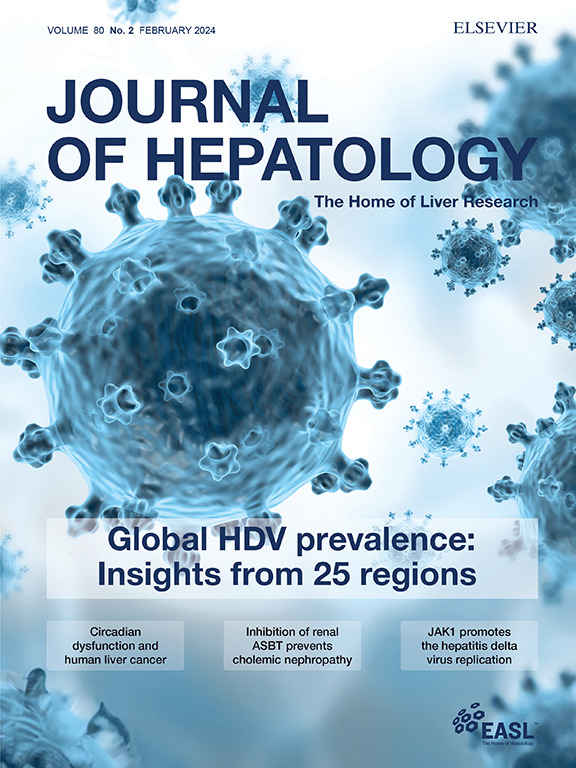冷热纤维化:血清生物标志物在人类纤维化中评估免疫机制和ecm细胞相互作用的作用
IF 26.8
1区 医学
Q1 GASTROENTEROLOGY & HEPATOLOGY
引用次数: 0
摘要
纤维化是一种病理状态,其特征是细胞外基质(ECM)成分,特别是胶原的过度积累,导致组织瘢痕和器官功能障碍。在纤维化中,胶原合成(纤维生成)和降解(纤维溶解)之间的不平衡导致纤维状胶原沉积破坏ECM的结构完整性,从而破坏组织结构。纤维化与多种慢性疾病相关,包括肝硬化、肾纤维化、肺纤维化和自身免疫性疾病。最近出现了“热”和“冷”纤维化的概念,指的是纤维化组织内的免疫状态和纤维化信号的性质。热纤维化的特点是活跃的免疫细胞浸润和炎症,而冷纤维化与自身和旁分泌肌成纤维细胞活化、免疫细胞排斥和静止有关。本文旨在探讨热纤维化和冷纤维化之间的关系,各种类型的胶原及其生物活性片段在调节免疫系统中的作用,以及血清学ECM生物标志物如何帮助理解纤维化组织中免疫细胞和间充质细胞之间的疾病相关相互作用。此外,我们从实体瘤的免疫肿瘤学研究中吸取教训,以阐明纤维化治疗的潜在策略,并强调通过调节免疫系统增强胶原降解来治疗纤维化的“热纤维化环境”的优势。本文章由计算机程序翻译,如有差异,请以英文原文为准。
Hot and Cold Fibrosis: The Role of Serum Biomarkers to assess the Immune Mechanisms and ECM-Cell Interactions in Human Fibrosis
Fibrosis is a pathological condition characterized by excessive accumulation of extracellular matrix (ECM) components, particularly collagens, leading to tissue scarring and organ dysfunction. In fibrosis, an imbalance between collagen synthesis (fibrogenesis) and degradation (fibrolysis) results in the deposition of fibrillar collagens disrupting the structural integrity of the ECM and, consequently, the tissue architecture. Fibrosis is associated with a wide range of chronic diseases, including liver cirrhosis, kidney fibrosis, pulmonary fibrosis, and autoimmune diseases. Recently, the concept of "hot" and "cold" fibrosis has emerged, referring to the immune status within fibrotic tissues and the nature of fibrogenic signaling. Hot fibrosis is characterized by active immune cell infiltration and inflammation, while cold fibrosis is associated with auto- and paracrine myofibroblast activation, immune cell exclusion and quiescence.This article aims to explore the relationship between hot and cold fibrosis, the role of various types of collagens and their biologically active fragments in modulating the immune system, and how serological ECM biomarkers can help the understanding of the disease-relevant interactions between immune and mesenchymal cells in fibrotic tissues. Additionally, we draw lessons from immuno-oncology research in solid tumors to shed light on potential strategies for fibrosis treatment and highlight the advantage of having a “hot fibrotic environment” to treat fibrosis by enhancing collagen degradation through modulation of the immune system.
求助全文
通过发布文献求助,成功后即可免费获取论文全文。
去求助
来源期刊

Journal of Hepatology
医学-胃肠肝病学
CiteScore
46.10
自引率
4.30%
发文量
2325
审稿时长
30 days
期刊介绍:
The Journal of Hepatology is the official publication of the European Association for the Study of the Liver (EASL). It is dedicated to presenting clinical and basic research in the field of hepatology through original papers, reviews, case reports, and letters to the Editor. The Journal is published in English and may consider supplements that pass an editorial review.
 求助内容:
求助内容: 应助结果提醒方式:
应助结果提醒方式:


